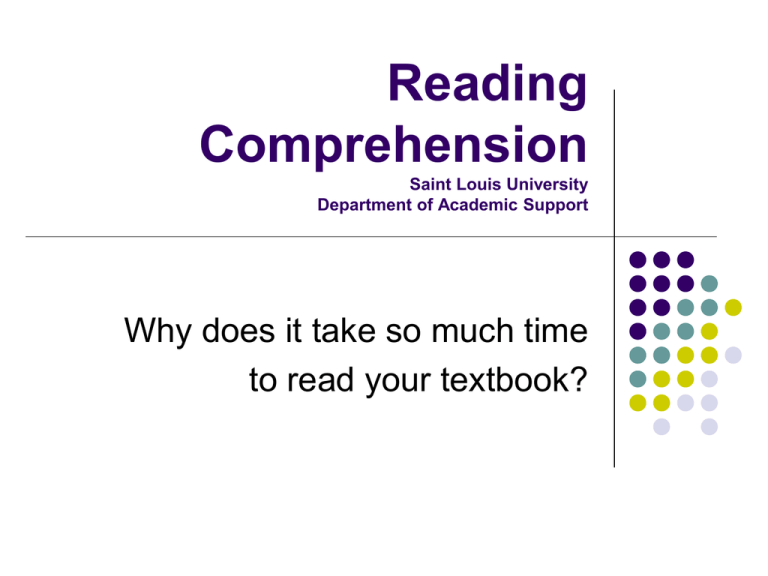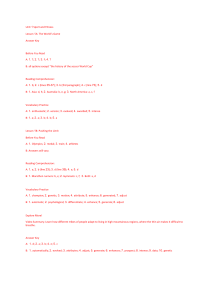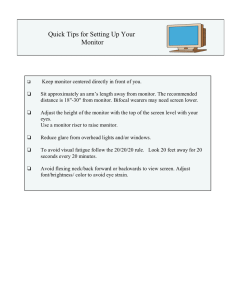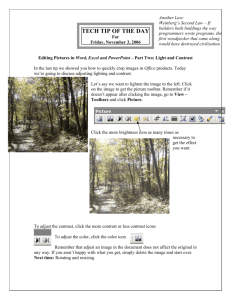Reading Comprehension Workshop
advertisement

Reading Comprehension Saint Louis University Department of Academic Support Why does it take so much time to read your textbook? What makes reading difficult? Four major factors contribute to the difficulty of your reading. Difficulty and familiarity of the concepts presented. The more unfamiliar or challenging the concepts, then the slower the reader will have to be in order to fully understand. For example, think of the differences between a textbook and a magazine. The level of vocabulary. If the vocabulary used is unfamiliar to you, the material will be harder to understand and comprehension will drop. (Continued on next slide) What makes reading difficult? The complexity of style. Textbooks with longer sentences and more challenging grammatical components require more concentration. Authors will be less direct and implicate their main ideas, which also require more intense thought. The reader’s ability to use key techniques to efficiently read. In this workshop, we will look at how to prepare and adjust your reading times based upon your reading purpose. Visit SLU’s Academic Support website to review additional reading comprehension tools. What is the purpose behind your reading? There are four main “purposes” to read… 1. To locate specific information. 2. To survey, gain an overview, or review information. 3. For recreation and entertainment. 4. To thoroughly understand and recall. As a student, you will need to begin your reading with a clear purpose. Adjust your time and planning based upon your purpose! Purpose: To locate specific information Kind of Activity: Scanning Type of Material: Any type Speed: Thousands of words per minute Adjust your time and planning based upon your purpose! Purpose: To survey, gain an overview, or review information Kind of Activity: Skimming Type of Material: Any type Speed: Thousands of words per minute Adjust your time and planning based upon your purpose! Purpose: For recreation or entertainment Kind of Activity: Rapid Reading Type of Material: Newspapers, magazines, and novels Speed: 250 to 800 words per minute Adjust your time and planning based upon your purpose! Purpose: To thoroughly understand and recall Kind of Activity: Study Reading Type of Material: Textbooks and technical materials Speed: Up to 250 words per minute Expect this process to take a while and attempt to schedule adequate time to complete “study” reading. Calculate how long it will take you to “study” your text. Instructions: From one of your textbooks, choose three pages that contain mostly words. Pull up http://www.online-stopwatch.com/ on a new internet window. Start the clock when you begin reading the pages. Read the way you would any homework assignment (including taking notes, time to reread something you didn’t first understand, etc). Stop the clock when you have finished reading the three pages. Continued on next slide Calculate how long it will take you to “study” your text. Instructions (cont): Divide the minutes by three (this is how long it took you to read ONE page). Multiply the number of pages you need to read by the time it takes to read ONE page. Divide this number by 60 to get total hours and minutes it will take to complete your reading. Example on next slide Calculate how long it will take you to “study” your text. For example: It took Matt 18 minutes to read three pages. 18/3 = 6 minutes to read one page. Matt has to read 20 pages for homework. 20*6=120 minutes to read 20 pages. 120/60= 2 hours to read 20 pages. Source: University of North Carolina, Greensboro http://success.uncg.edu/lac/ Want more information? Contact: Kelly Herbolich Coordinator, Academic Support Student Success Center Busch Student Center, Room 331 kherboli@slu.edu



